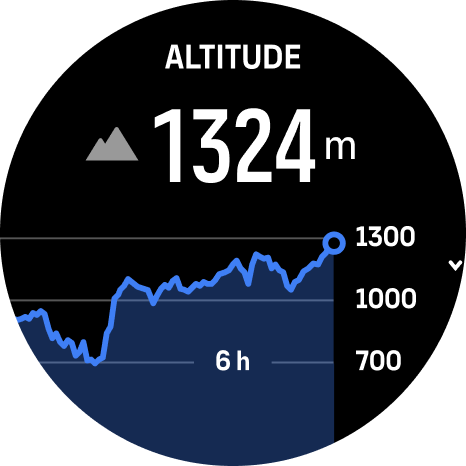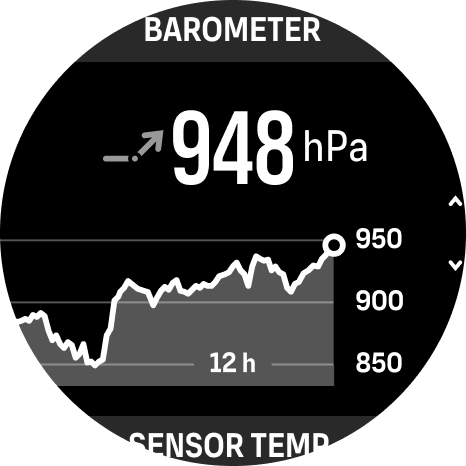Suunto Ocean User Guide
- Alti & Baro
Alti & Baro
Suunto Ocean constantly measures absolute air pressure using the built-in pressure sensor. Based on this measurement and your altitude reference value, it calculates altitude or air pressure.
Keep the area around the two air pressure sensor holes located at six o'clock on the side of your watch free of dirt and sand. Never insert any objects into the holes as this may damage the sensor.
From watch face, swipe up or press the lower button to scroll to the alti & baro widget. The widget has three views that can be accessed by swiping up and down. The first view displays the current altitude.

Swipe up to see the barometric pressure and the barometer trend graph.

Swipe up again to see the temperature.
Swipe down or press the lower button to go back.
Be sure to have your altitude reference value set correctly (see Altimeter). The altitude of your current location can be found from most topographic maps or major on-line map services such as Google Maps.
Changes in local weather conditions affect altitude readings. If local weather changes often, you should reset the altitude reference value regularly, preferably before starting your next journey.
Automatic alti-baro profile
Weather and altitude changes both cause a change in air pressure. To handle this, Suunto Ocean automatically switches between interpreting changes in air pressure as altitude or weather changes based on your movement.
If your watch senses vertical movement, it switches to measuring altitude. When you are viewing the altitude graph, it is updated with a maximum delay of 10 seconds.
If you are at a constant altitude (less than 5 meters of vertical movement within 12 minutes), your watch interprets air pressure changes as weather changes and adjusts the barometer graph accordingly.